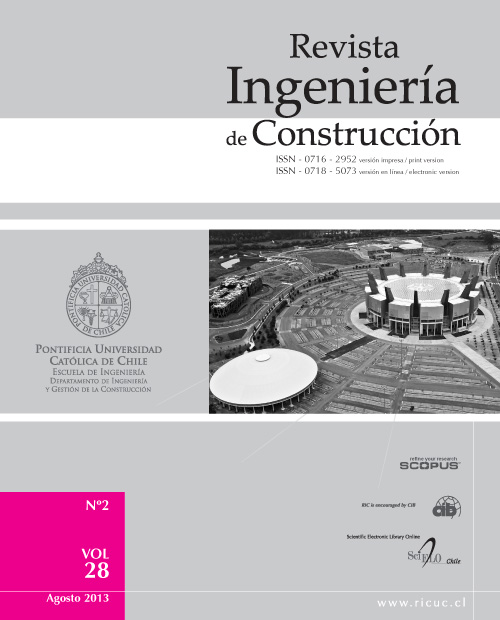Seismic vulnerability assessment of extradosed bridges during cantilever construction
DOI:
https://doi.org/10.4067/S0718-50732013000200002Keywords:
Extradosed bridges, seismic vulnerability, construction, cantilever, annual exceedance probabilityAbstract
This paper presents the study of seismic vulnerability of extradosed bridges during cantilever construction. The seismic response during six construction phases and two in service, before and after creep and shrinkage of concrete takes place, of a 3-span extradosed bridge (60 + 100 + 60 m) were determined by means of finite elements models. Using the approach proposed by Wilson and Holmes (2007), seismic response during construction and in service were compared to determine structural elements with higher vulnerability and to detect critical stages during construction. The results show that the seismic vulnerability of the bridge during construction is higher than in service, this is supported on the fact that during construction annual exceedance probabilities are higher than 0.21%, a commonly adopted value for the seismic design of bridges. Furthermore, it was found that extradosed cables and the towers are the most vulnerable elements and that the stages before the closure of the bridge during construction are the most critical.

